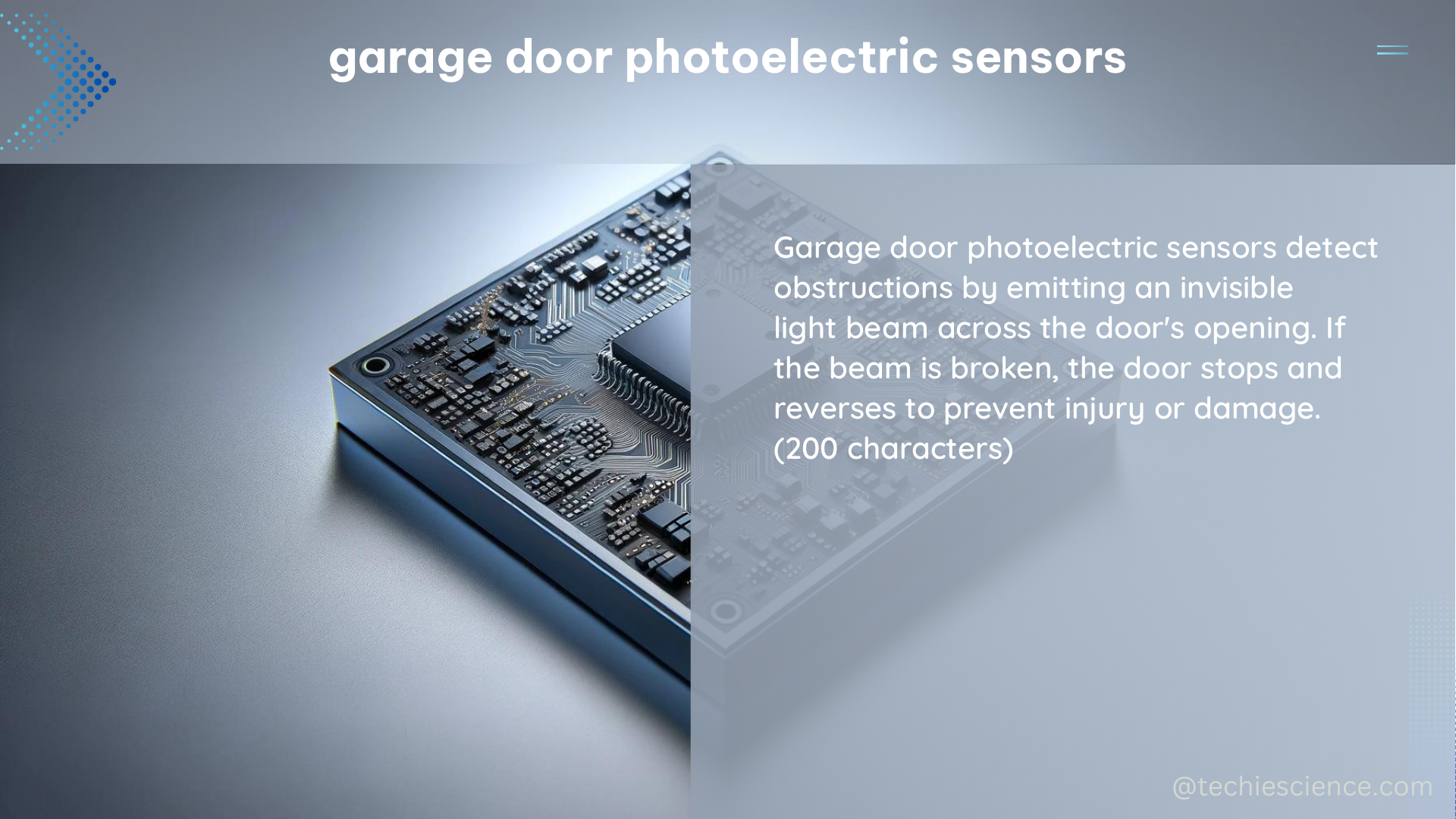Garage door photoelectric sensors are crucial safety components that use an infrared beam to detect obstructions and prevent the garage door from closing, thereby protecting people and objects from potential harm. These sensors are mandated by the Consumer Product Safety Commission (CPSC) since 1993 to reduce the number of fatalities and injuries caused by garage door accidents.
Understanding the Placement and Testing of Photoelectric Sensors
The sensors are typically placed 6 inches off the floor and 6 inches horizontally away from the door, ensuring optimal protection for children and other vulnerable individuals. To test the functionality of these sensors, one can simply interrupt the beam with their foot while the garage door is closing. If the opener doesn’t reverse and open again, it indicates a malfunction that needs immediate attention.
| Sensor Placement | Measurement |
|---|---|
| Height from floor | 6 inches |
| Horizontal distance from door | 6 inches |
The Liftmaster garage door IR safety sensors generate a series of pulses with a duration of 0.3ms, which are repeated every 6.5ms. These pulses are used to determine if the beam is obstructed or not. When the beam is interrupted, the pulses disappear, signaling the opener to halt the door’s movement.
Emulating and Bypassing Photoelectric Sensors

Advanced users have developed methods to emulate or bypass the safety sensors using microcontrollers like the ATTiny85 and components such as N-type mosfets, 7805 regulators, capacitors, and resistors. These custom solutions aim to create a compact standalone unit that imitates the “all clear” signal, enabling the garage door opener to function without the original sensors.
Components for Emulating Photoelectric Sensors
- ATTiny85 microcontroller
- N-type MOSFET (e.g., 2N7000)
- 7805 voltage regulator
- Capacitors (e.g., 0.1μF, 10μF)
- Resistors (e.g., 10kΩ, 1kΩ)
The ATTiny85 microcontroller is programmed to generate the appropriate pulse sequence to mimic the behavior of the original photoelectric sensors. The N-type MOSFET is used as a switch to control the signal sent to the garage door opener, while the 7805 regulator provides a stable 5V supply for the circuit. Capacitors and resistors are used for filtering and biasing the circuit.
By understanding the technical specifications of the photoelectric sensors, advanced users can troubleshoot and customize their garage door systems to meet their specific needs.
Troubleshooting and Maintenance
Regular testing of the photoelectric sensors is crucial to ensure their proper function. If the garage door opener does not reverse and open when the beam is interrupted, it indicates a malfunction that requires immediate attention. Common issues may include:
- Misalignment of the sensors
- Dirt or debris blocking the infrared beam
- Faulty sensors or wiring
To troubleshoot and maintain the photoelectric sensors, follow these steps:
- Visually inspect the sensors for any physical damage or misalignment.
- Clean the sensor lenses with a soft, dry cloth to remove any dirt or debris.
- Check the wiring connections between the sensors and the garage door opener for any loose or damaged cables.
- Test the sensors by interrupting the beam while the door is closing. Ensure the door reverses and opens completely.
- If the sensors are not functioning properly, replace them with new, compatible units.
By understanding the technical details and proper maintenance of garage door photoelectric sensors, DIY enthusiasts can ensure the safety and reliable operation of their garage door systems.
Conclusion
Garage door photoelectric sensors are essential safety features that use infrared beams to detect obstructions and prevent accidents. They are mandated by the CPSC and should be tested regularly to ensure proper function. Advanced users can emulate or bypass these sensors using microcontrollers and other electronic components, while understanding the technical specifications of these sensors can help in troubleshooting and customizing garage door systems.
References:
– Garage Door Photoelectric Sensors: How They Work and Why They’re Important
– Bypassing/Emulating Garage Door Opener Safety Sensors
– Garage Door Opener Safety Sensor Emulation

The lambdageeks.com Core SME Team is a group of experienced subject matter experts from diverse scientific and technical fields including Physics, Chemistry, Technology,Electronics & Electrical Engineering, Automotive, Mechanical Engineering. Our team collaborates to create high-quality, well-researched articles on a wide range of science and technology topics for the lambdageeks.com website.
All Our Senior SME are having more than 7 Years of experience in the respective fields . They are either Working Industry Professionals or assocaited With different Universities. Refer Our Authors Page to get to know About our Core SMEs.